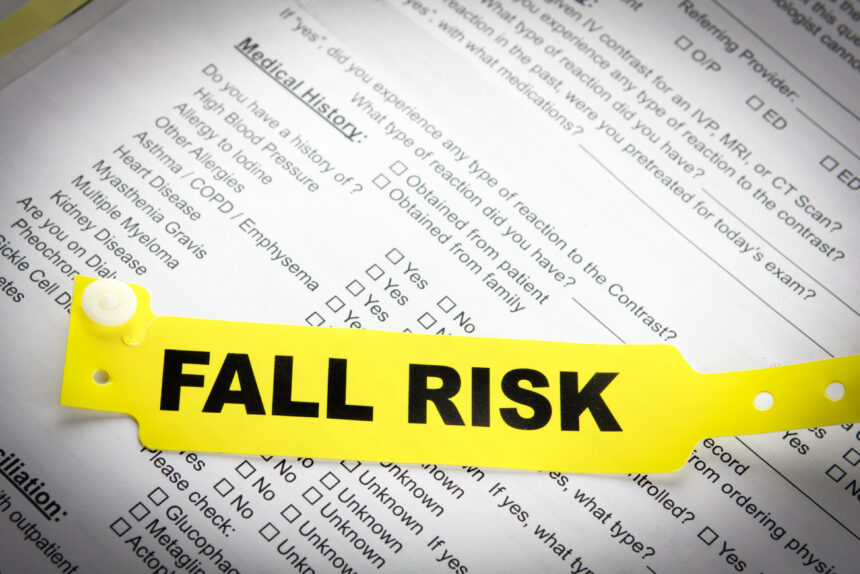The Facts About Dementia Fall Risk Revealed
Table of ContentsDementia Fall Risk Things To Know Before You BuyGetting My Dementia Fall Risk To WorkDementia Fall Risk - Truths3 Simple Techniques For Dementia Fall Risk
A fall threat evaluation checks to see how most likely it is that you will drop. It is mainly done for older adults. The assessment usually consists of: This includes a collection of inquiries regarding your total health and if you have actually had previous drops or problems with balance, standing, and/or walking. These tools evaluate your toughness, balance, and gait (the way you stroll).STEADI includes testing, evaluating, and intervention. Treatments are recommendations that might reduce your danger of dropping. STEADI includes 3 actions: you for your risk of falling for your danger aspects that can be enhanced to attempt to stop falls (as an example, equilibrium issues, damaged vision) to lower your risk of falling by making use of effective approaches (as an example, giving education and learning and resources), you may be asked numerous inquiries including: Have you fallen in the past year? Do you feel unstable when standing or strolling? Are you stressed over dropping?, your provider will certainly evaluate your toughness, balance, and stride, making use of the adhering to fall evaluation tools: This examination checks your stride.
Then you'll rest down again. Your company will certainly check how much time it takes you to do this. If it takes you 12 seconds or more, it may mean you go to higher danger for a fall. This examination checks strength and balance. You'll rest in a chair with your arms crossed over your breast.
The placements will obtain more difficult as you go. Stand with your feet side-by-side. Move one foot halfway ahead, so the instep is touching the large toe of your various other foot. Move one foot totally in front of the other, so the toes are touching the heel of your other foot.
A Biased View of Dementia Fall Risk
The majority of falls happen as a result of multiple contributing factors; as a result, handling the danger of dropping starts with recognizing the elements that add to fall risk - Dementia Fall Risk. Several of one of the most pertinent threat factors include: Background of prior fallsChronic medical conditionsAcute illnessImpaired stride and equilibrium, lower extremity weaknessCognitive impairmentChanges in visionCertain high-risk medications and polypharmacyEnvironmental variables can additionally enhance the danger for falls, including: Inadequate lightingUneven or damaged flooringWet or slippery floorsMissing or harmed handrails and get barsDamaged or poorly equipped equipment, such as beds, wheelchairs, or walkersImproper use assistive devicesInadequate supervision of the individuals living in the NF, consisting of those that exhibit aggressive behaviorsA successful autumn threat administration program requires a comprehensive medical analysis, with input from all members of the interdisciplinary team
-copy-5.jpg)
The care plan should also include treatments that are system-based, such as those that advertise a risk-free environment (suitable illumination, hand rails, grab bars, and so on). The efficiency of the treatments should be reviewed occasionally, and the care plan changed as required to reflect adjustments in the fall danger evaluation. Implementing a fall danger monitoring system utilizing evidence-based best practice can decrease the frequency of falls in the NF, while limiting the possibility for fall-related injuries.
The smart Trick of Dementia Fall Risk That Nobody is Talking About
The AGS/BGS standard recommends screening all grownups matured 65 her comment is here years and older for autumn threat annually. This testing includes asking clients whether they have actually dropped 2 or even more times in the previous year or sought clinical interest for a fall, or, if they have not fallen, whether they really feel unsteady when strolling.
People that have dropped when without injury needs to have their balance and stride examined; those with stride or equilibrium abnormalities need to obtain extra evaluation. A history of 1 autumn without injury and without gait or equilibrium problems does not warrant additional evaluation beyond ongoing annual fall threat screening. Dementia Fall Risk. An autumn threat assessment is called for as component of the Welcome to Medicare evaluation

All About Dementia Fall Risk
Recording a falls history is one of the top quality indicators for fall avoidance and monitoring. copyright drugs in certain are independent forecasters of falls.
Postural hypotension can typically be alleviated by minimizing the dose of blood pressurelowering medications and/or quiting medicines that have orthostatic hypotension as an adverse effects. Usage of above-the-knee assistance hose and copulating the head of the bed elevated might additionally reduce postural decreases in blood pressure. The recommended aspects of a fall-focused health examination are revealed in Box 1.

A yank time more than or equal to 12 secs suggests high fall danger. The 30-Second Chair Stand test examines lower extremity strength and equilibrium. Being incapable to stand from a chair of knee elevation without using one's arms suggests boosted fall danger. The 4-Stage Balance test evaluates static equilibrium by having the client stand in 4 placements, each progressively view much more tough.